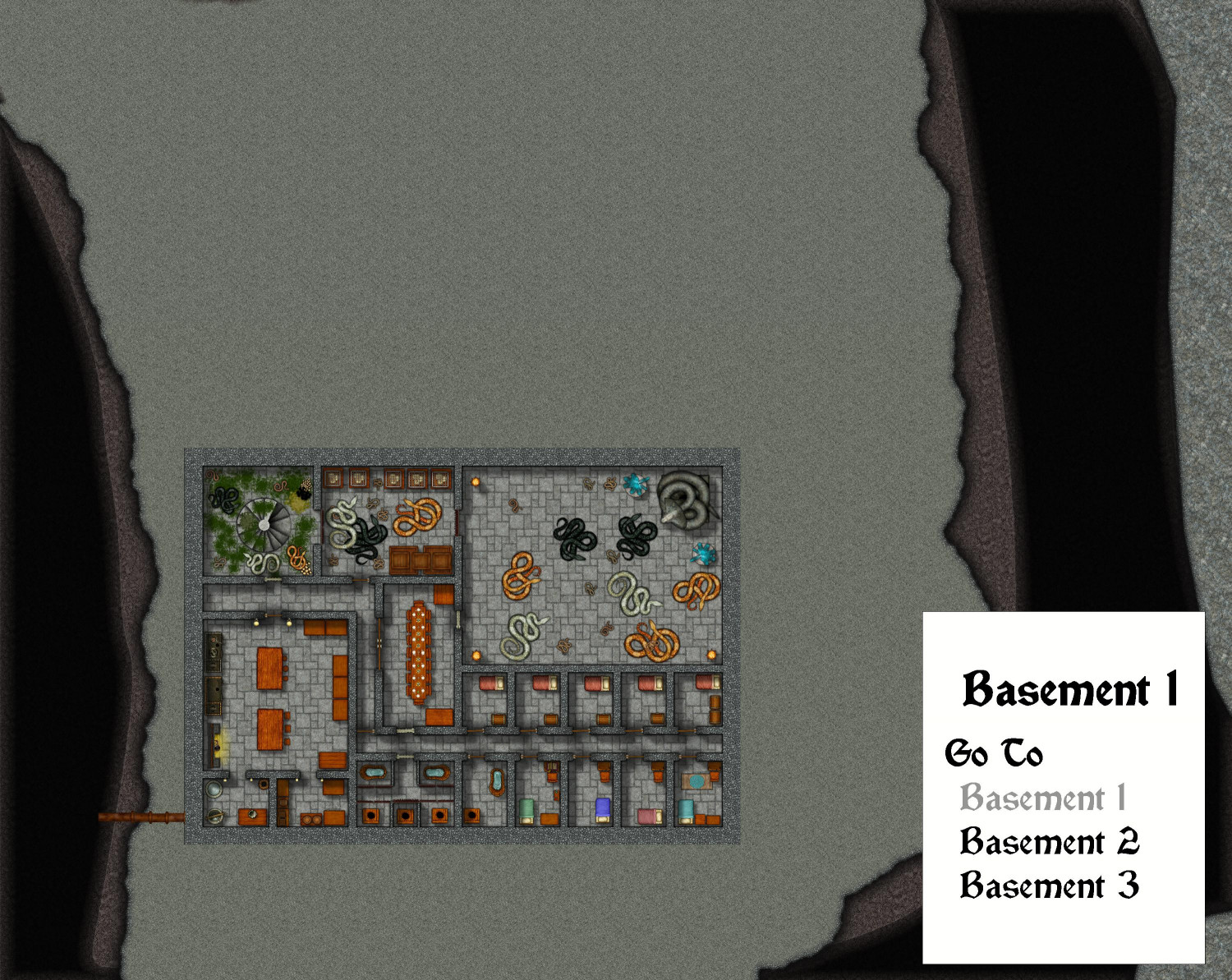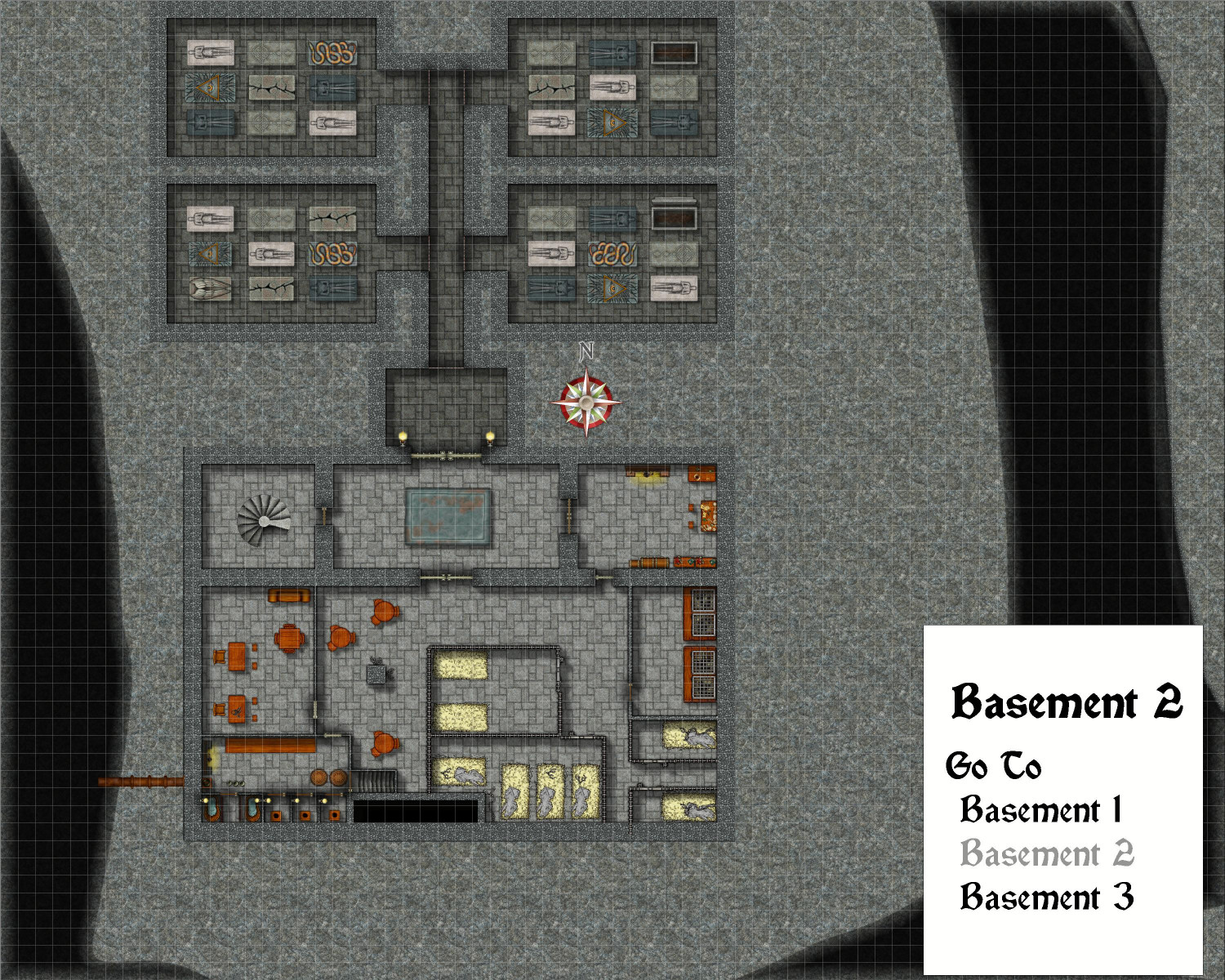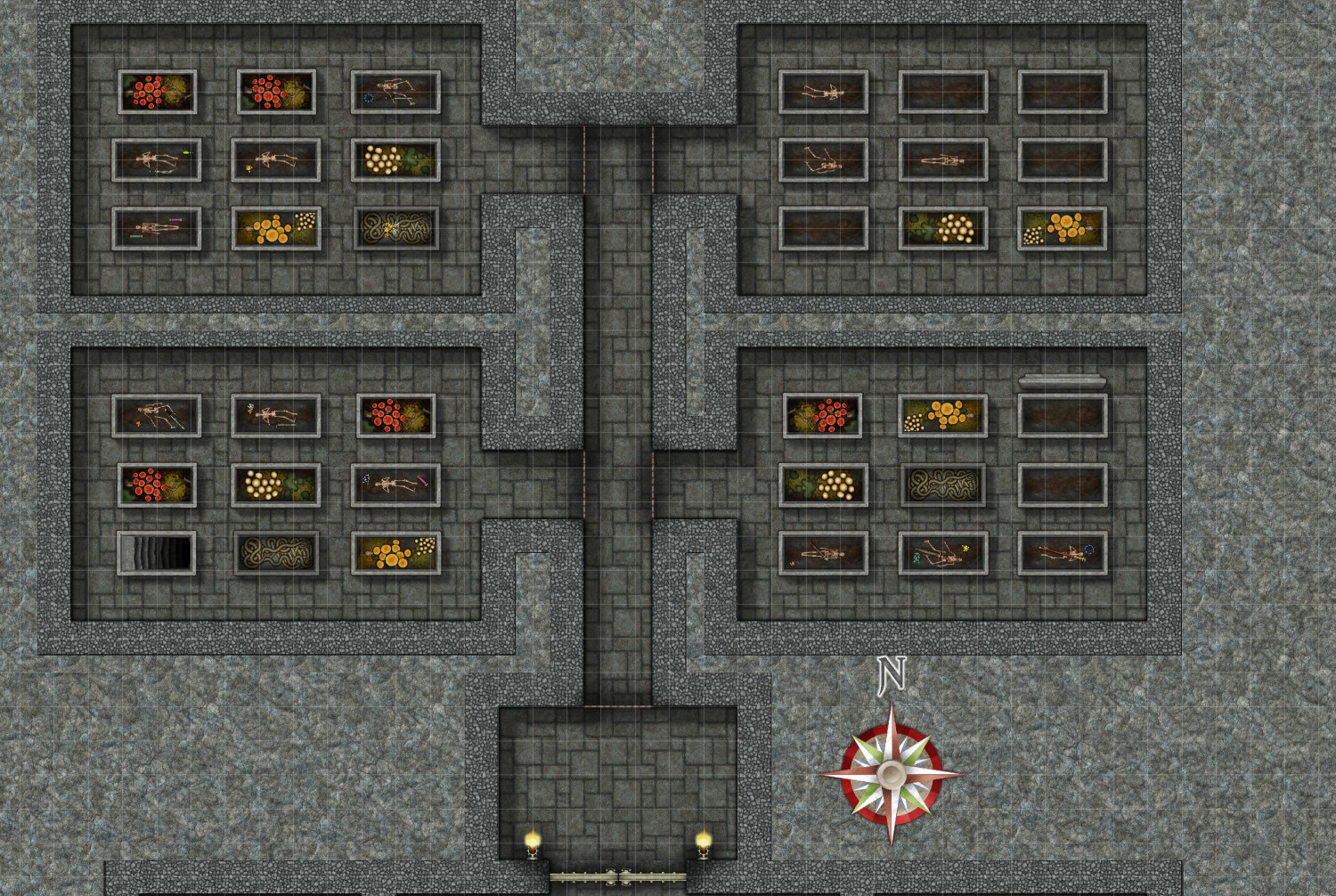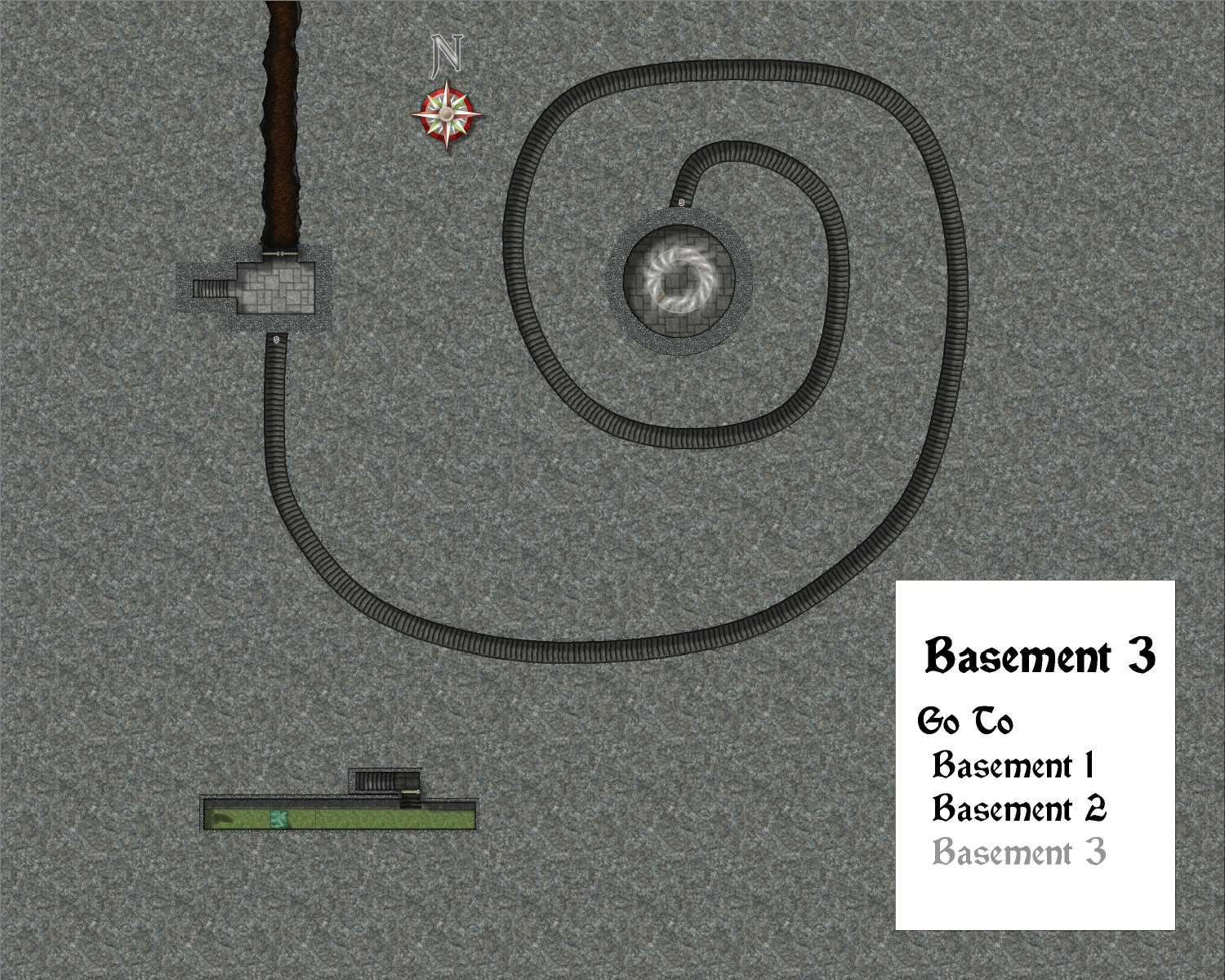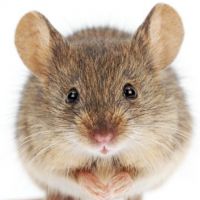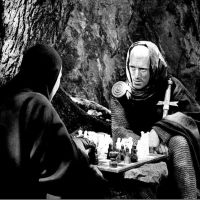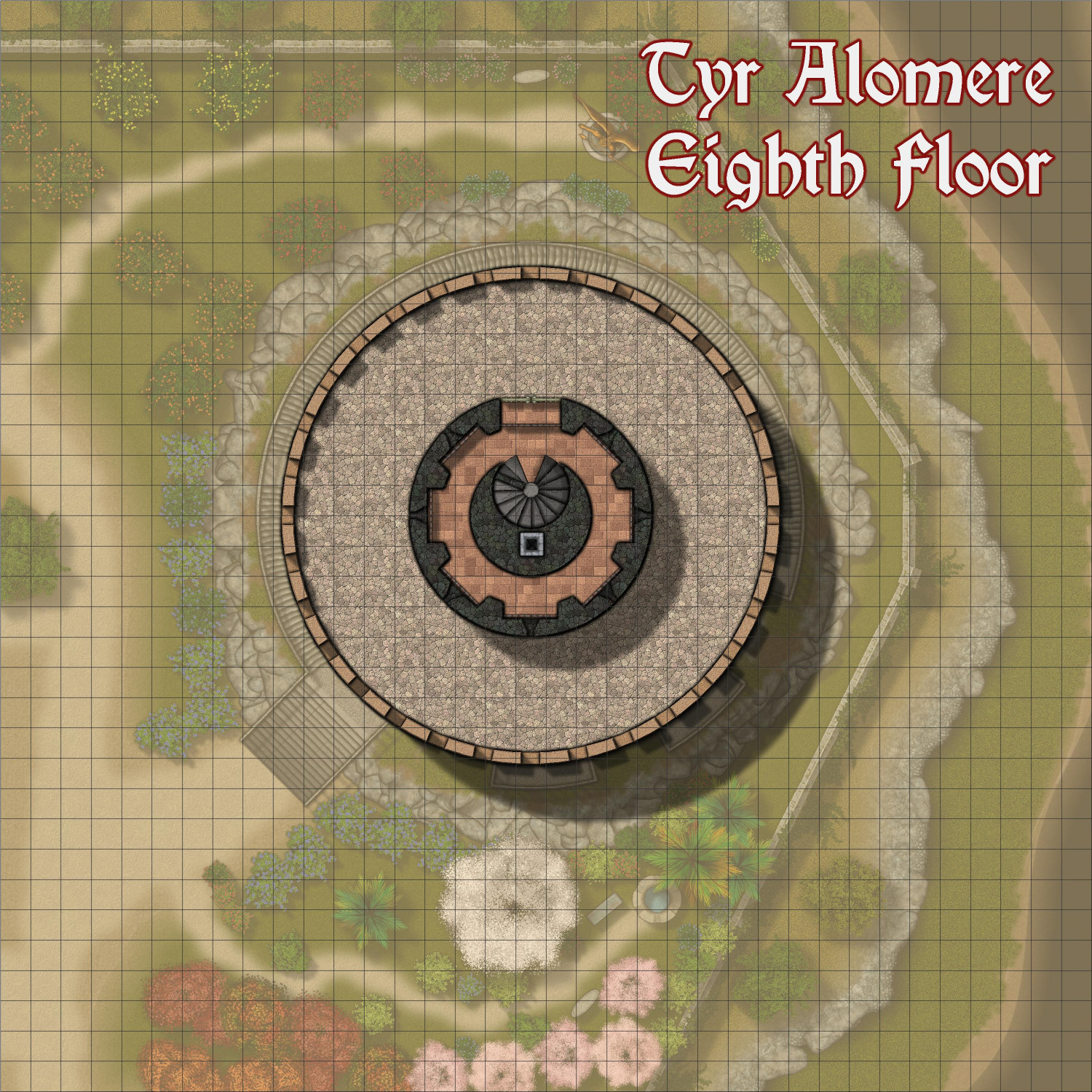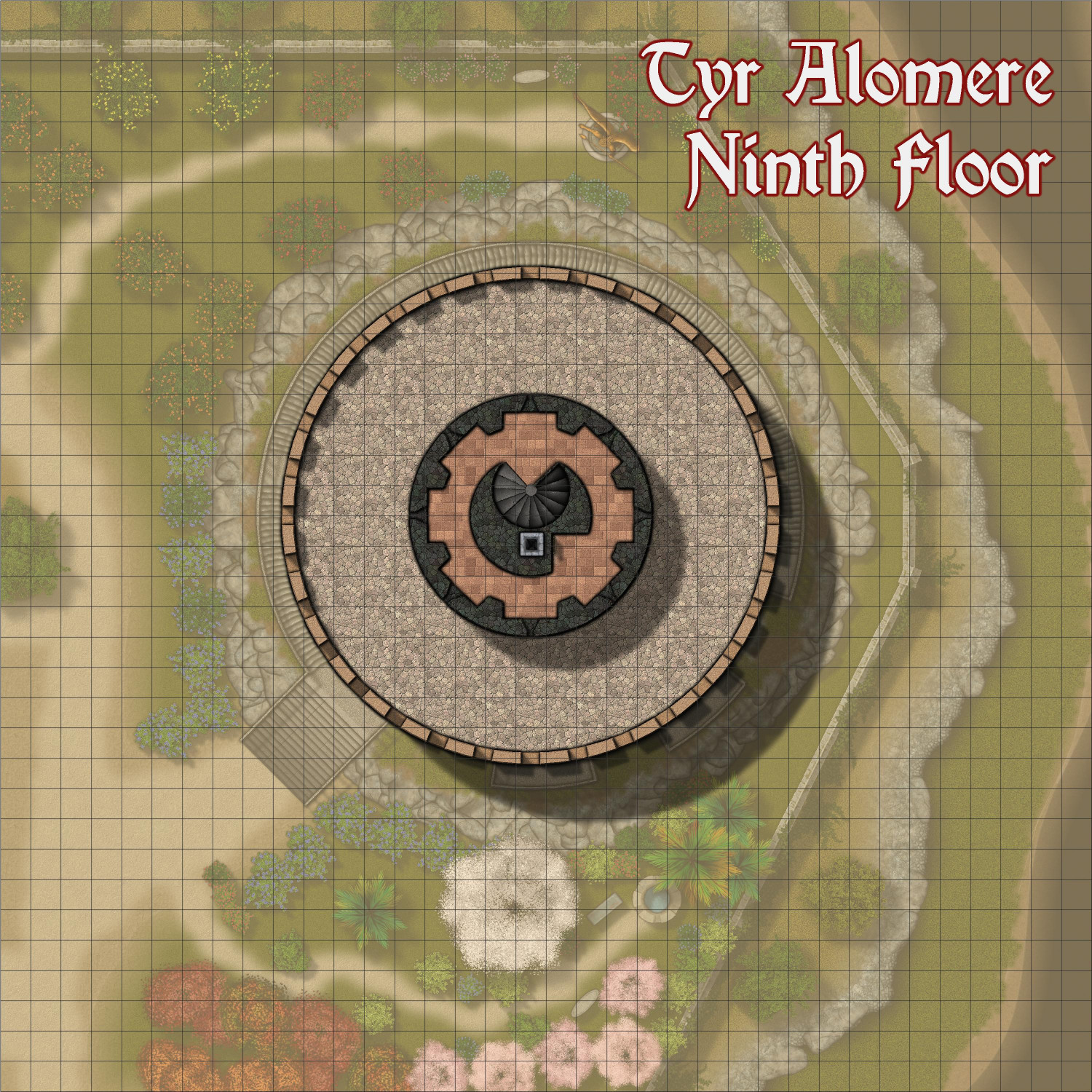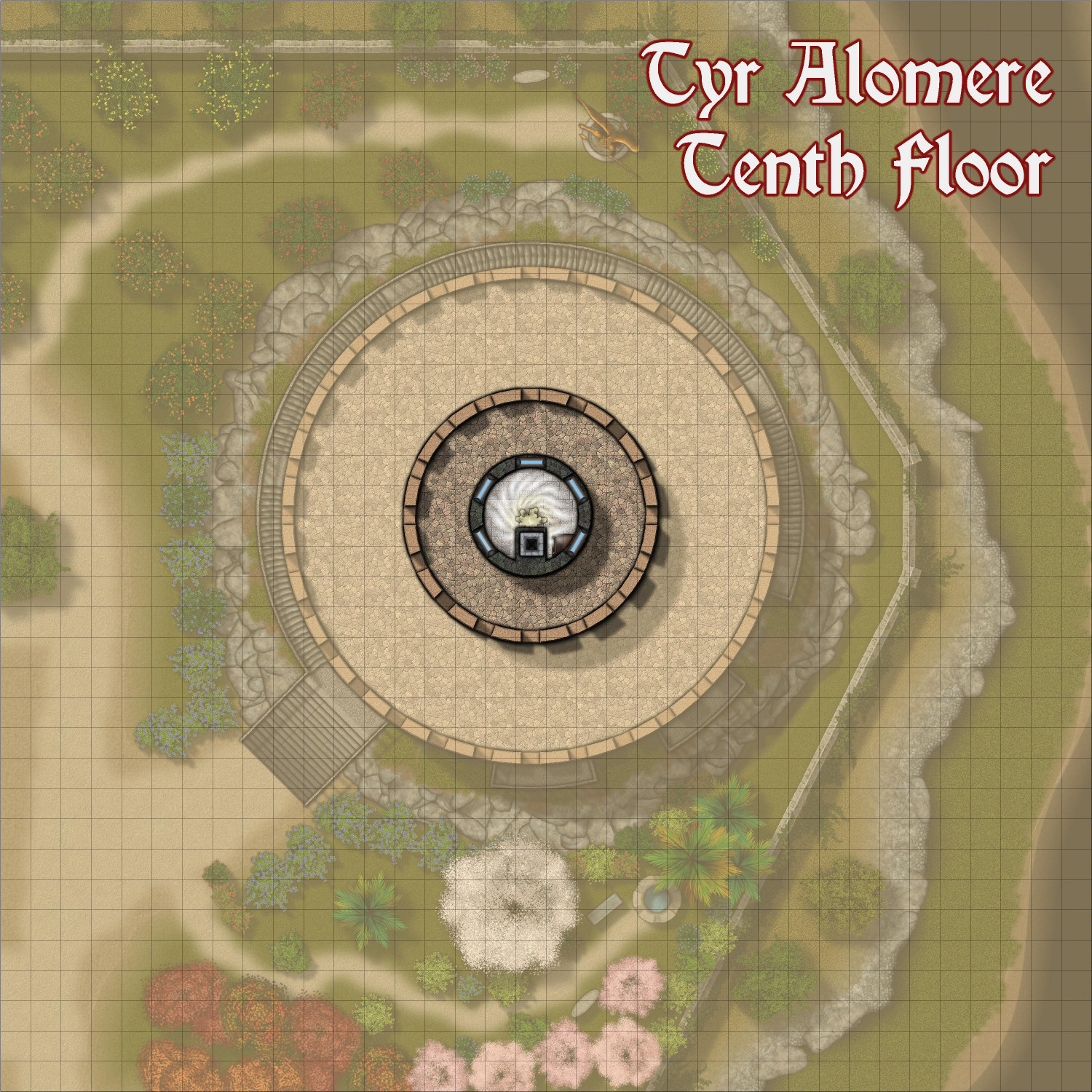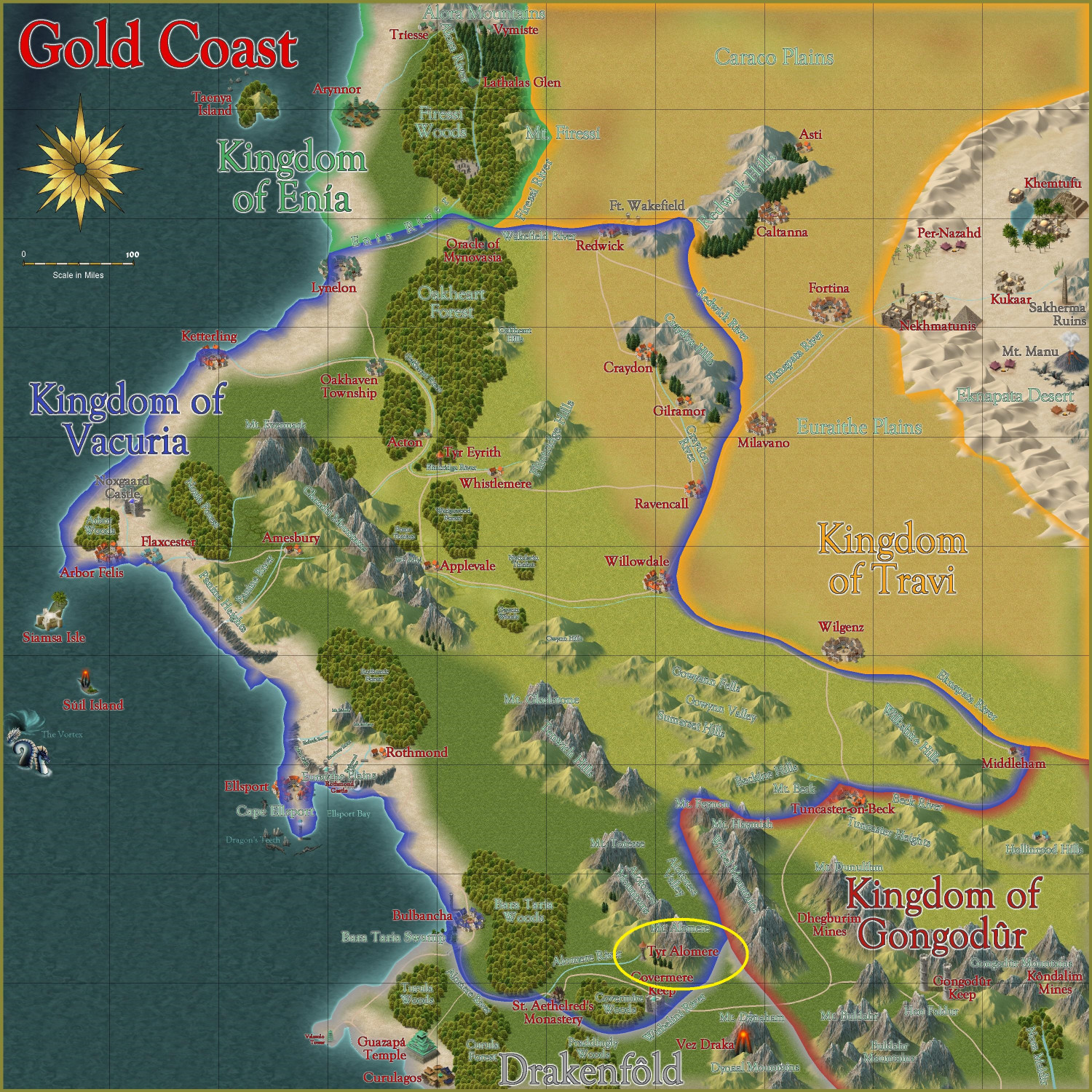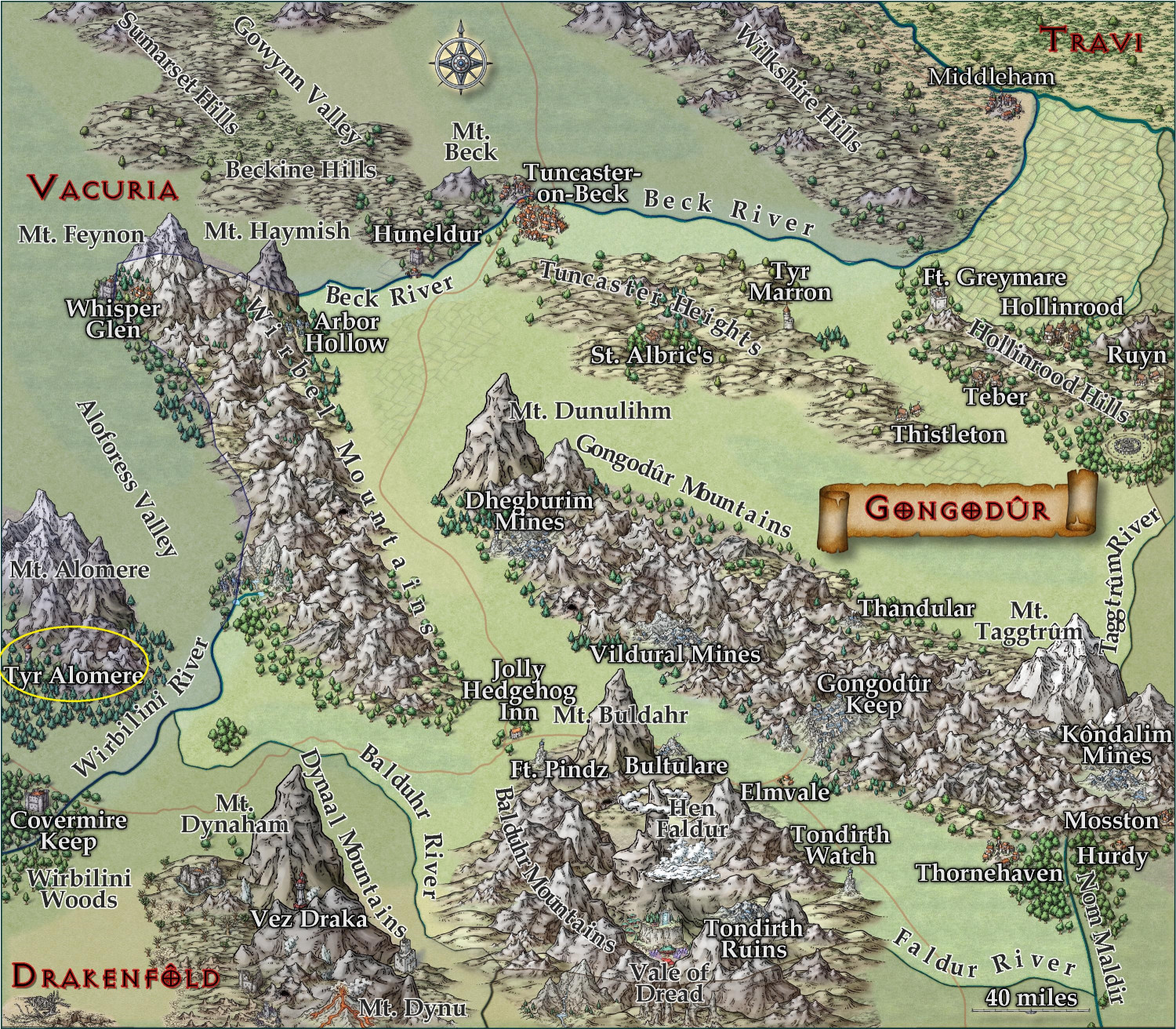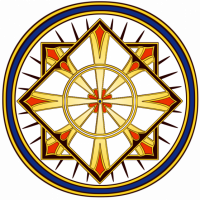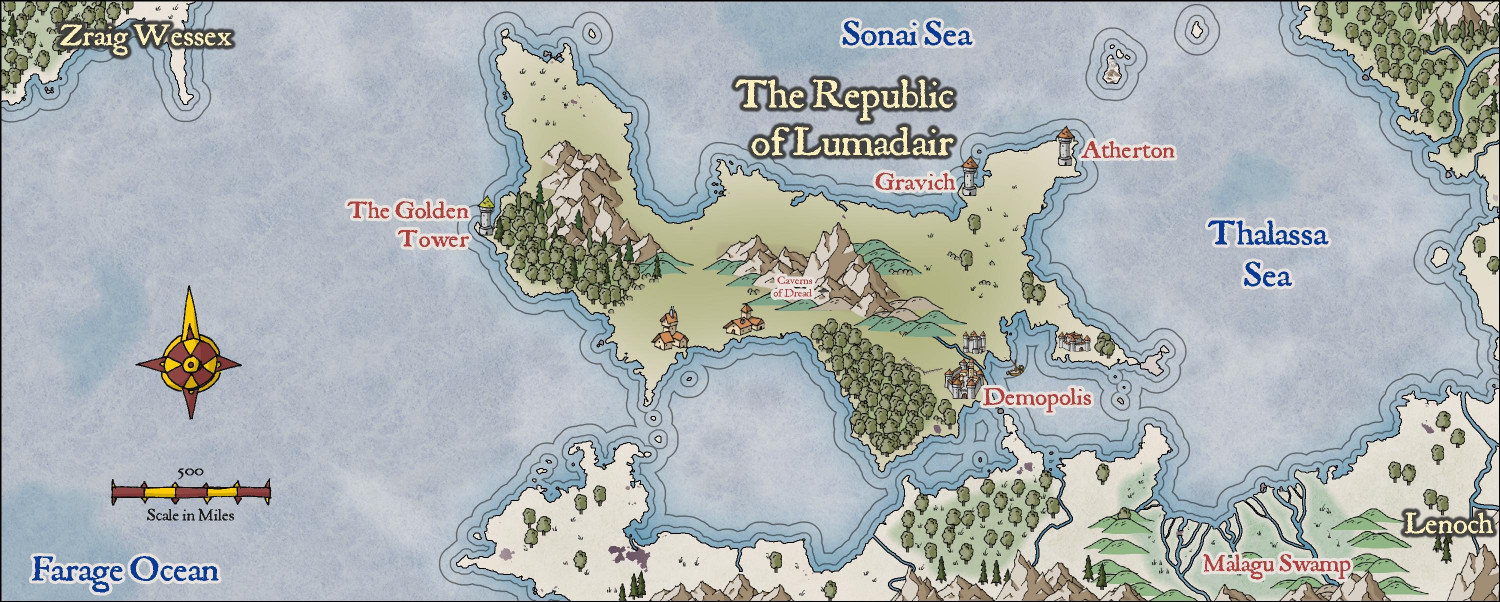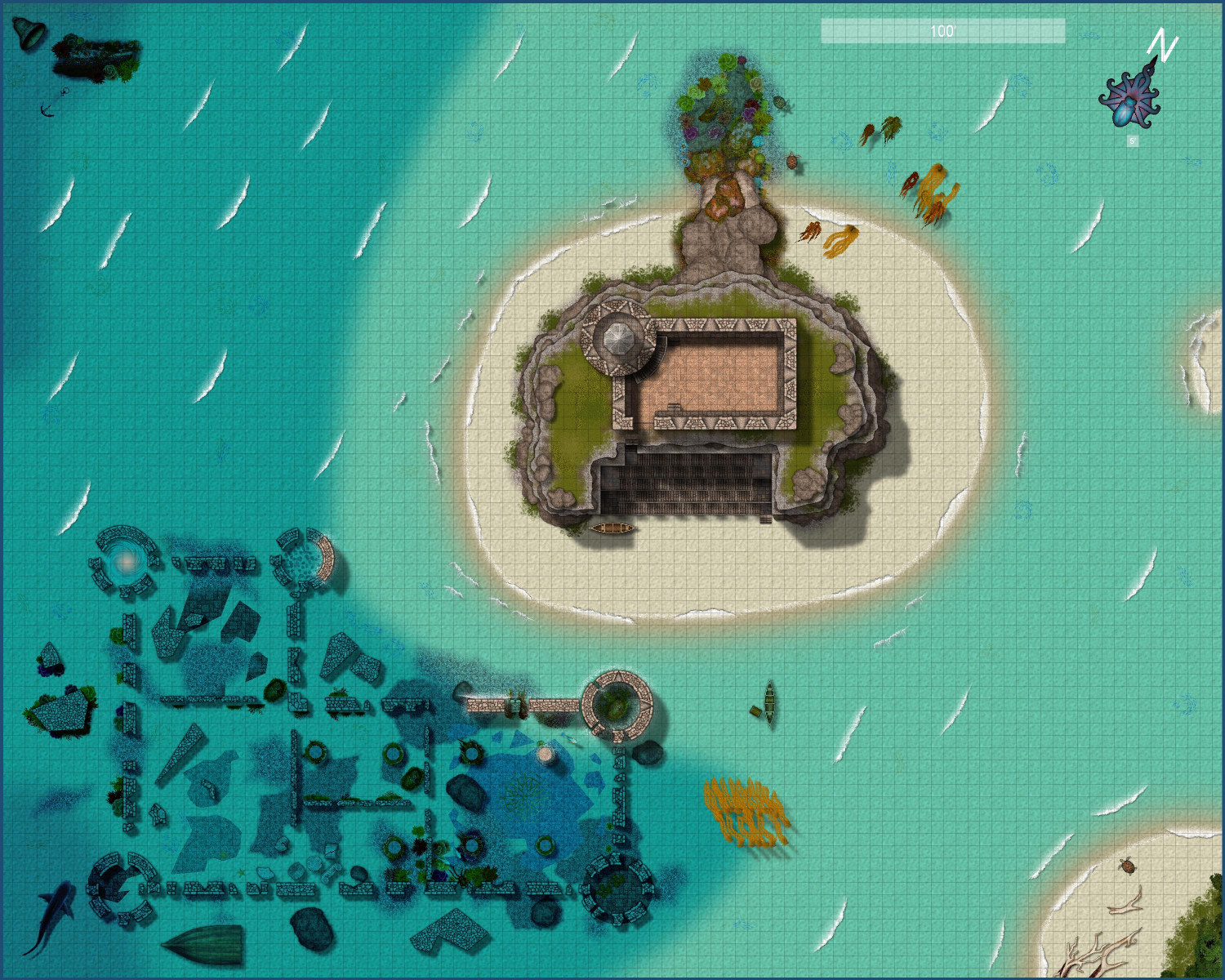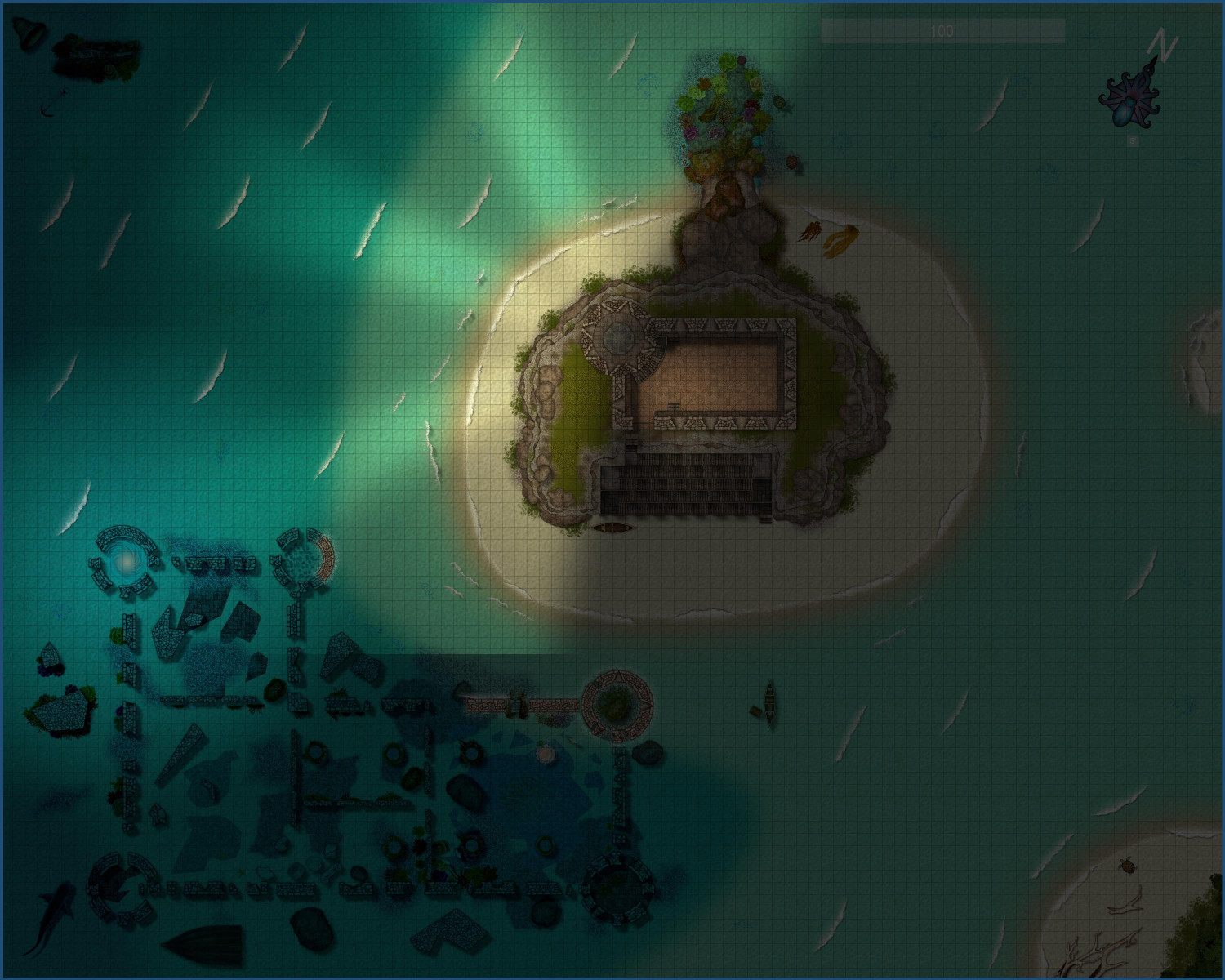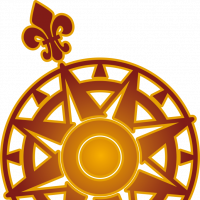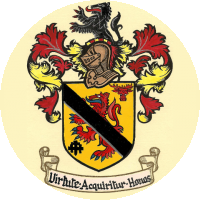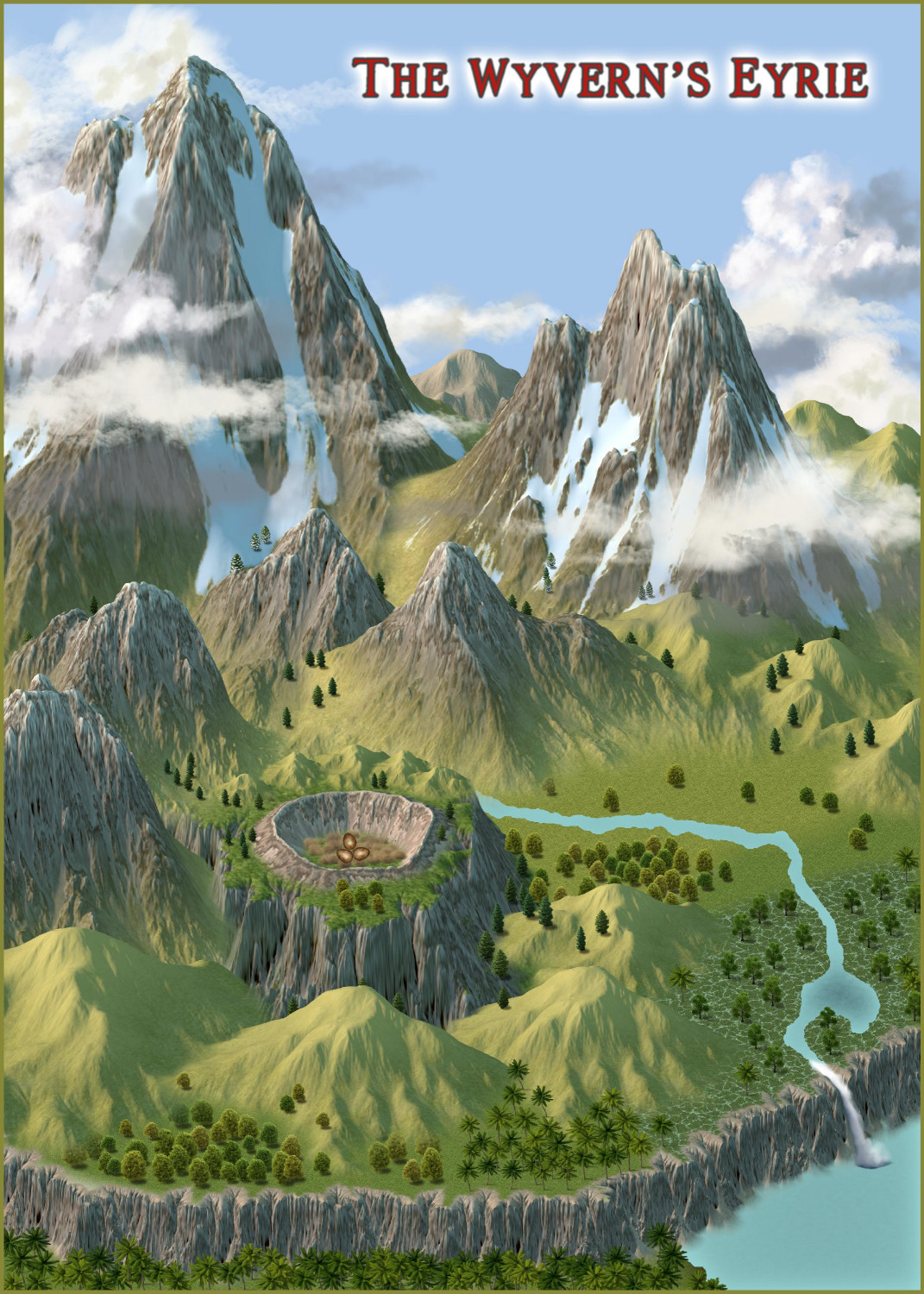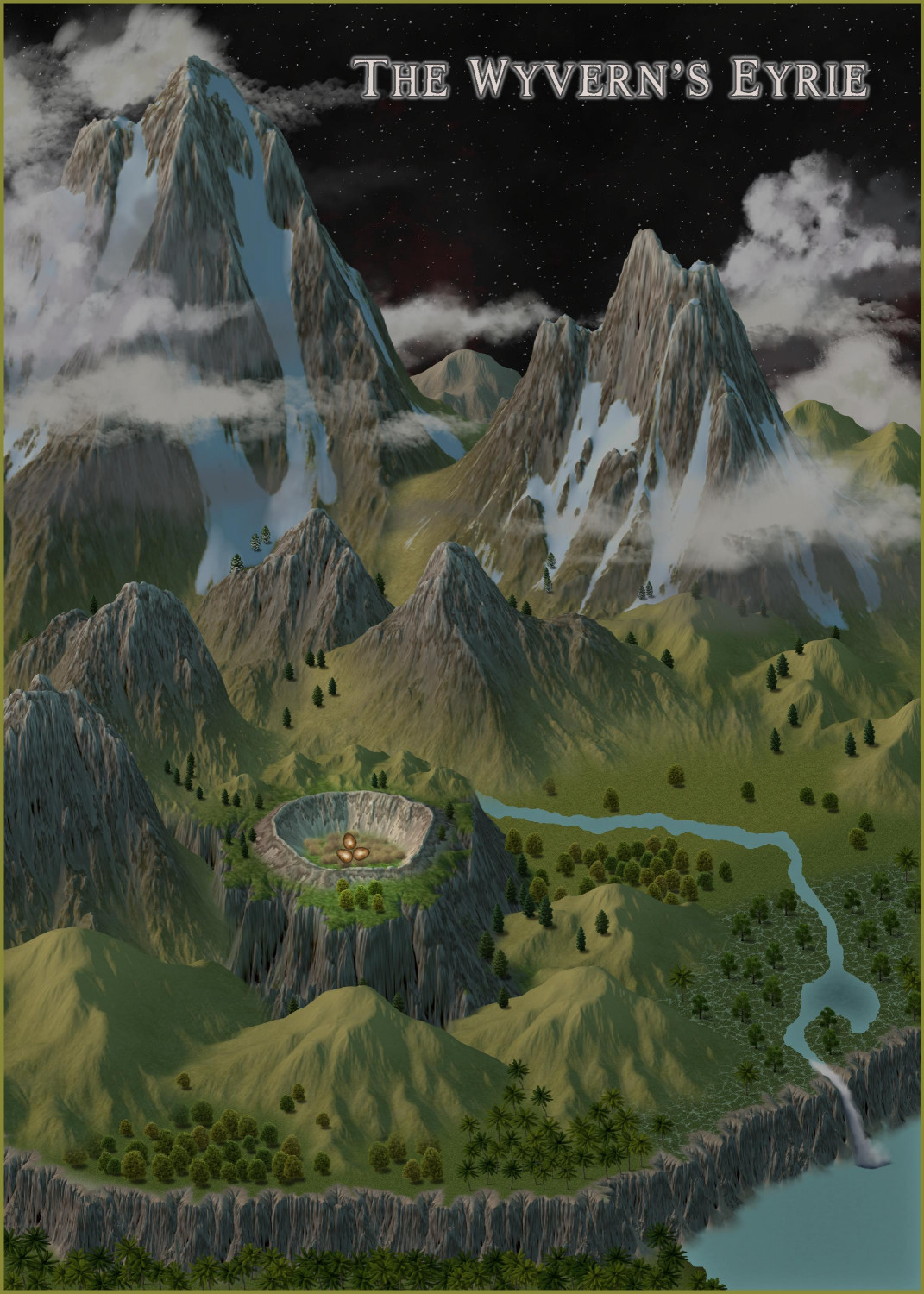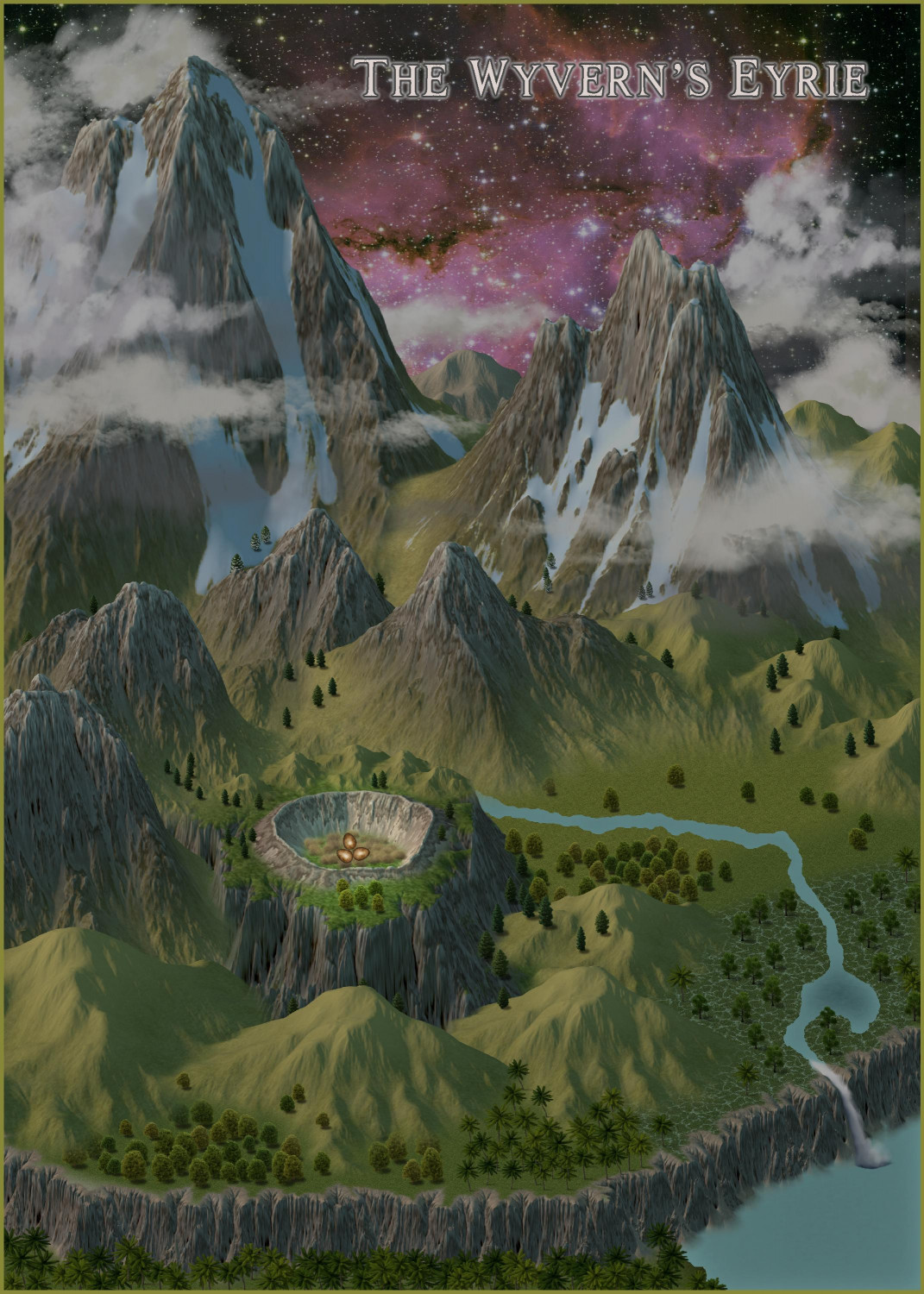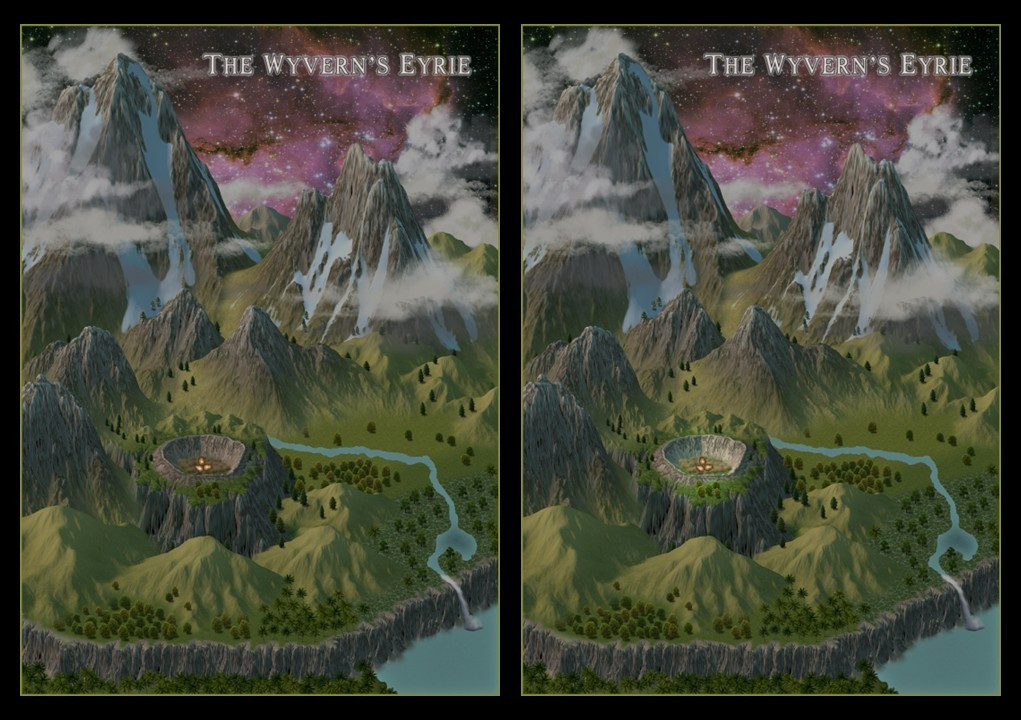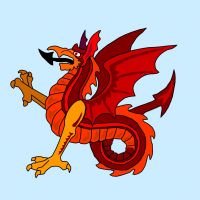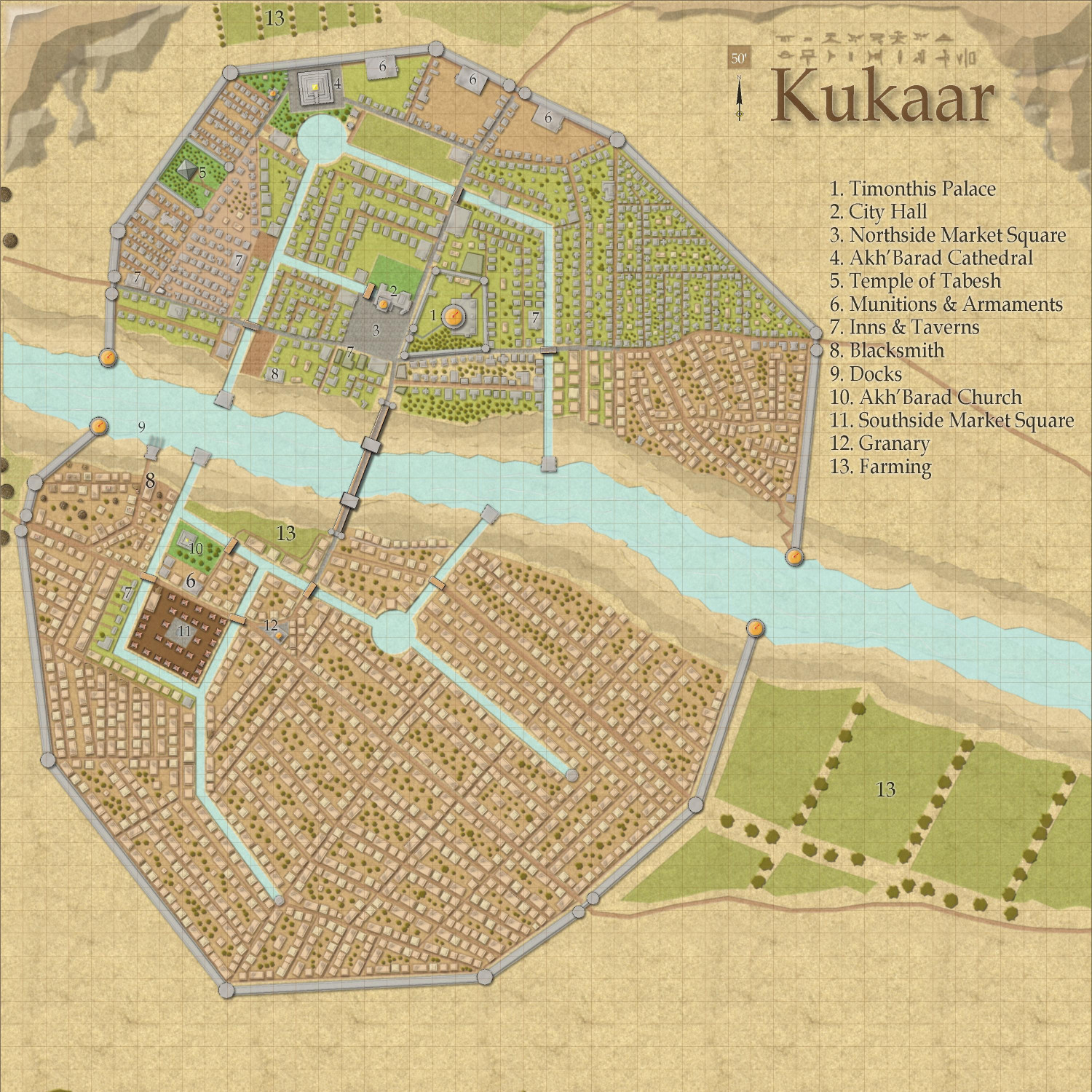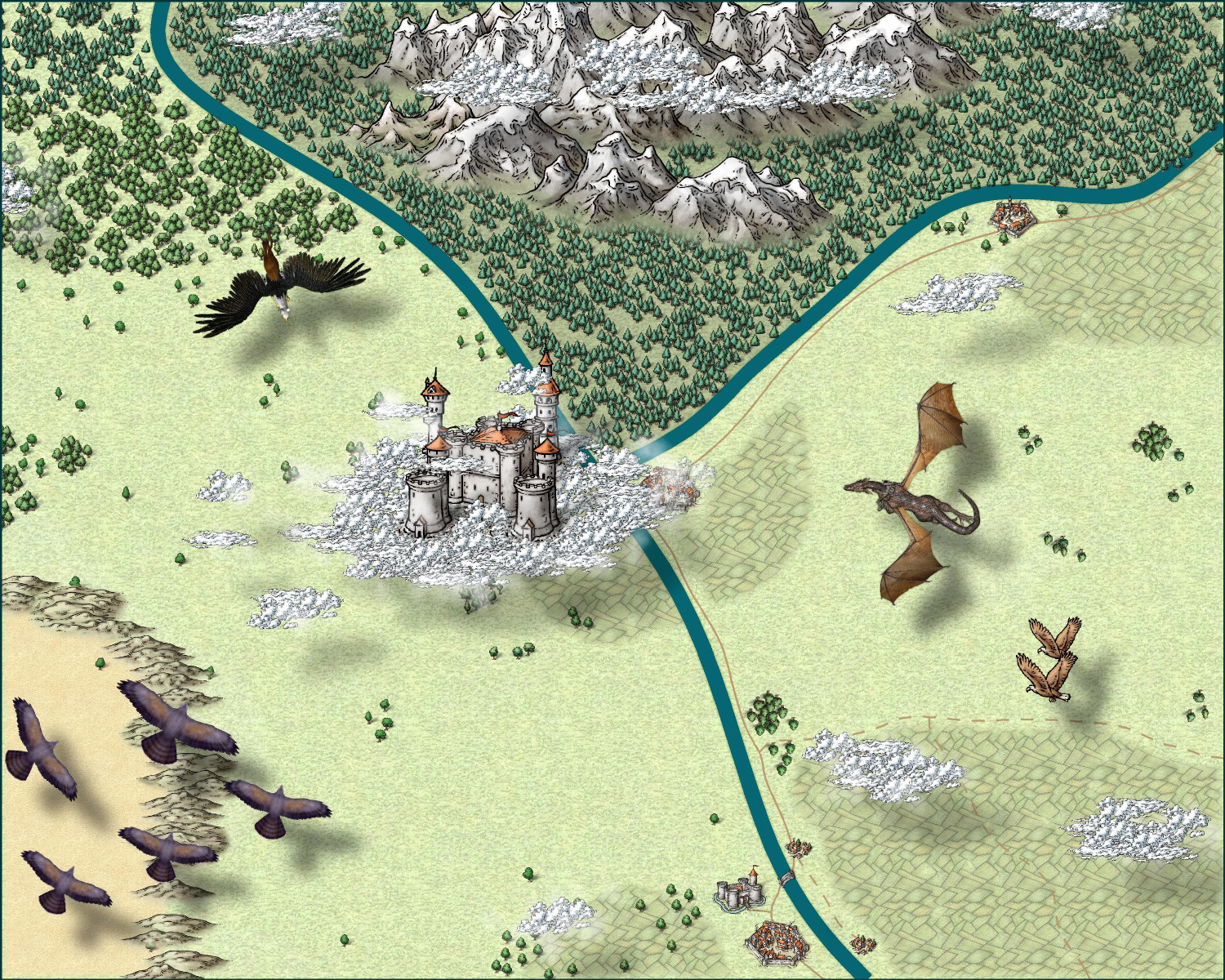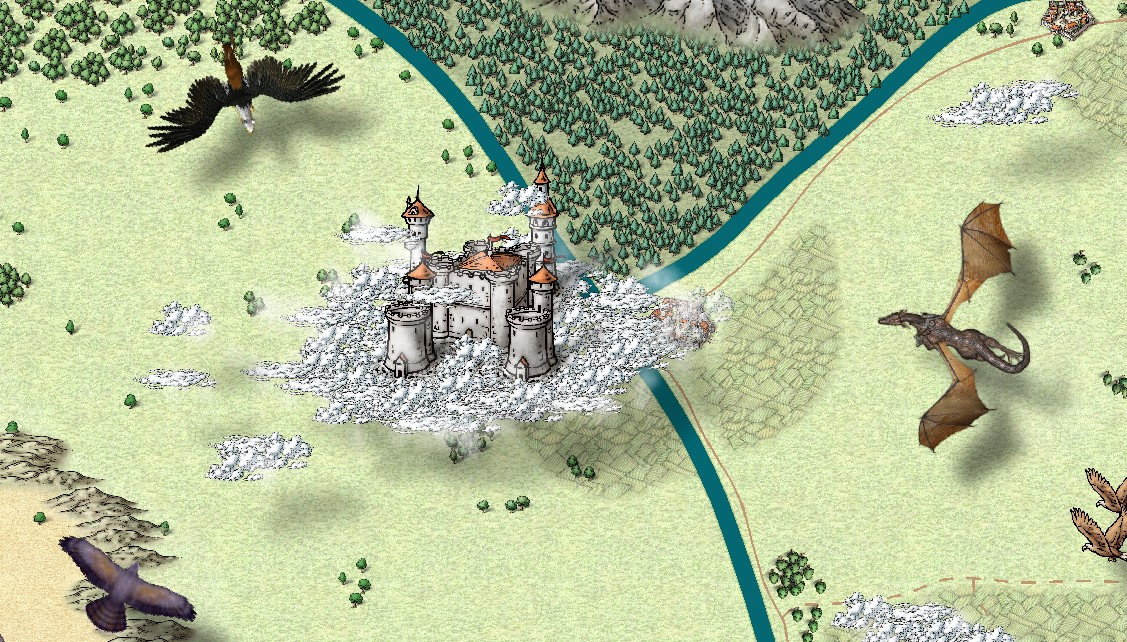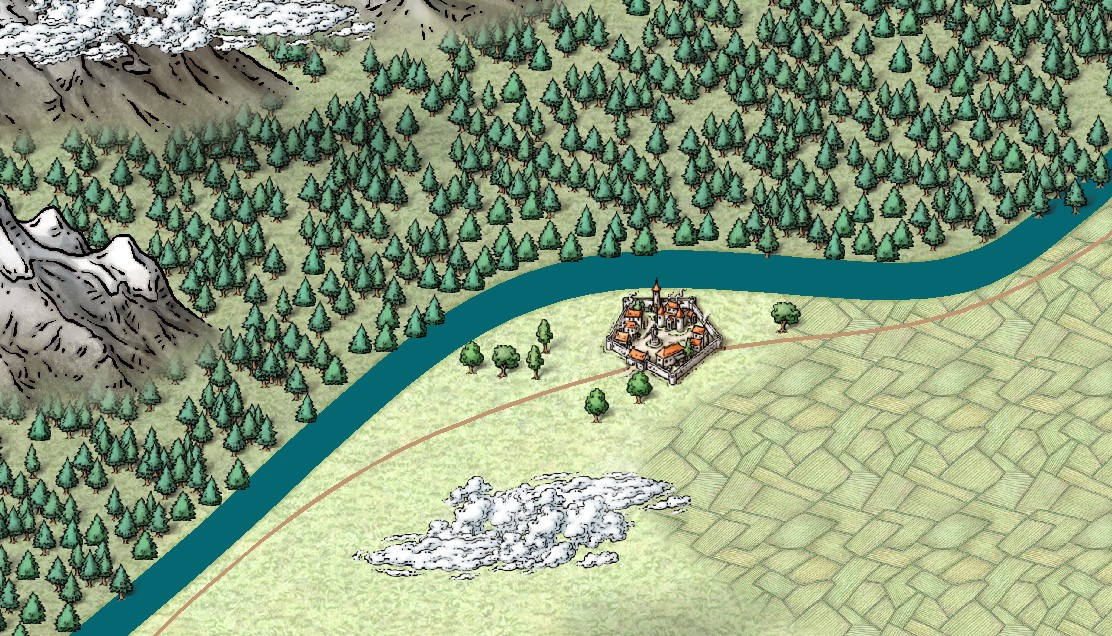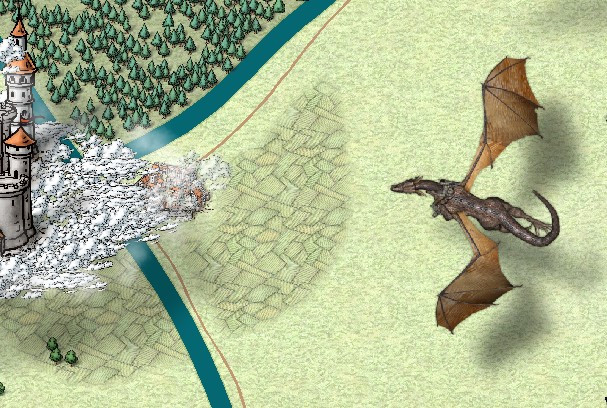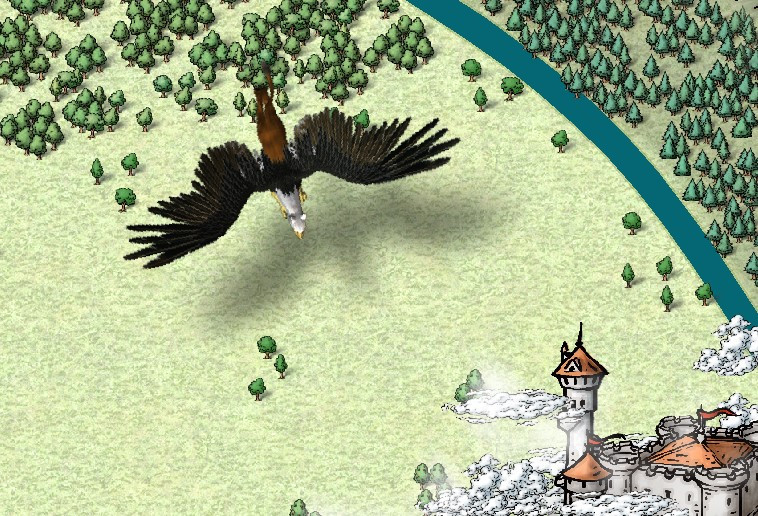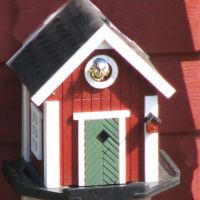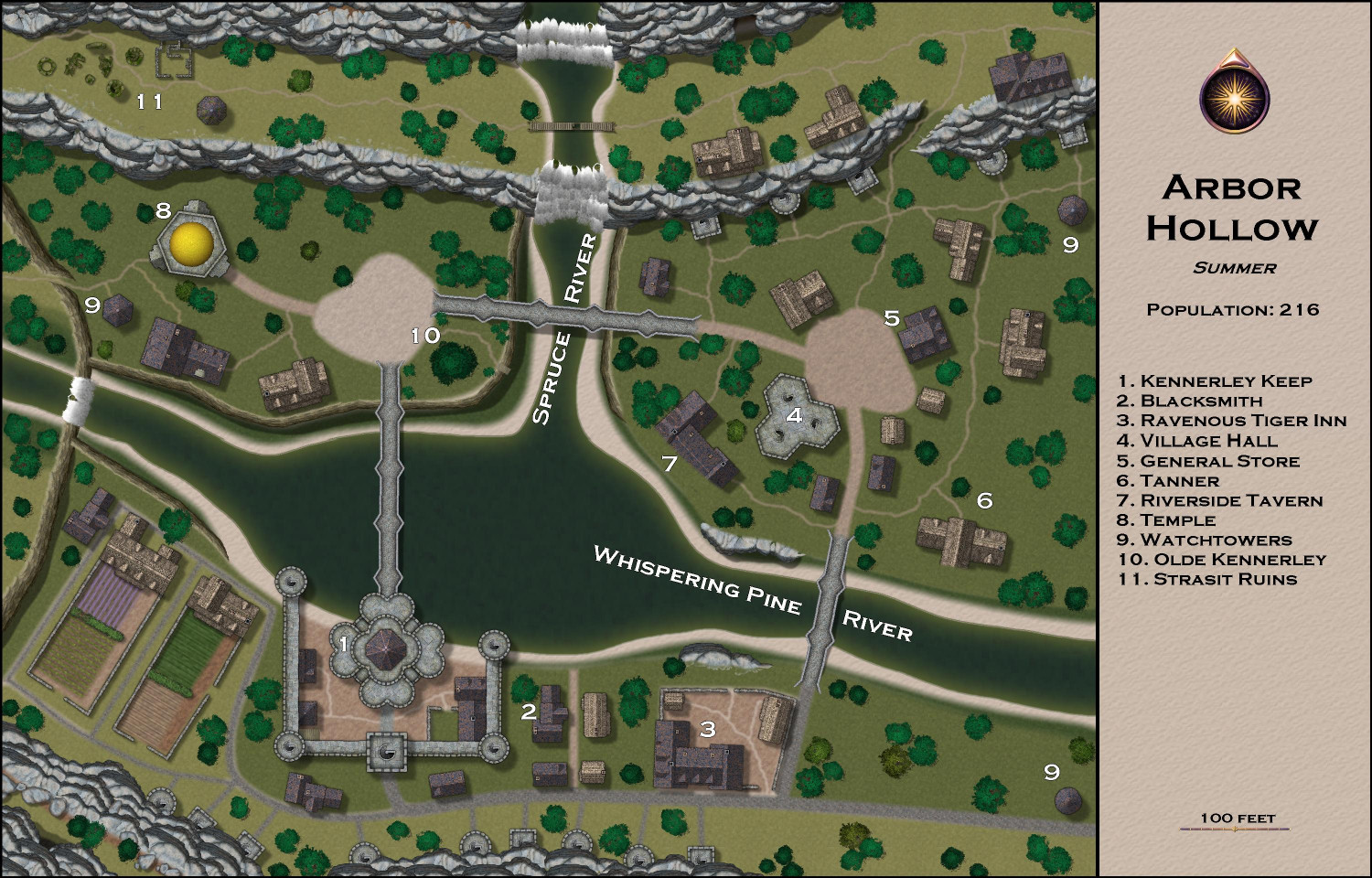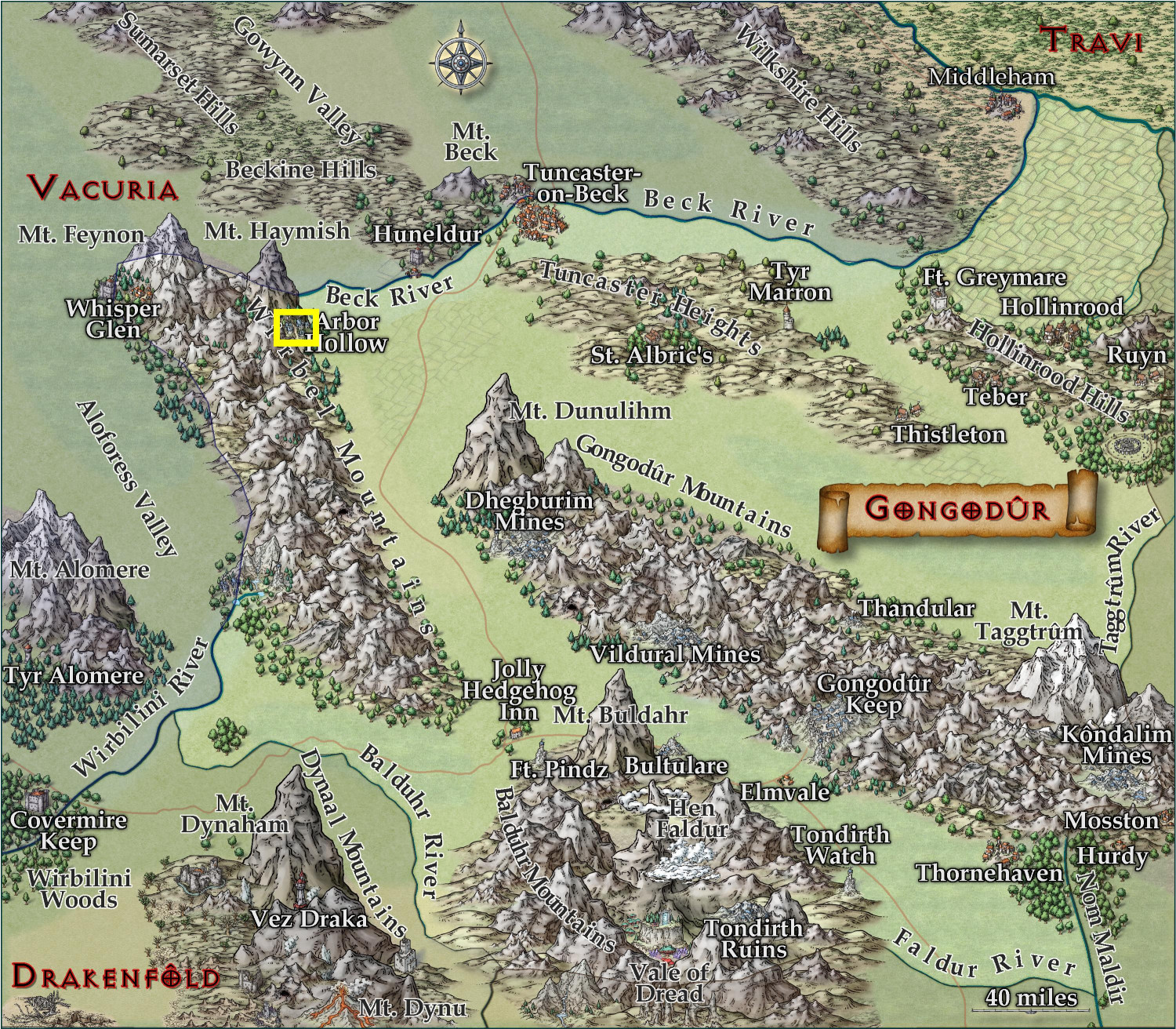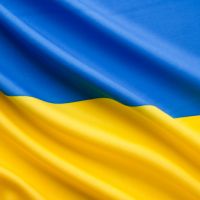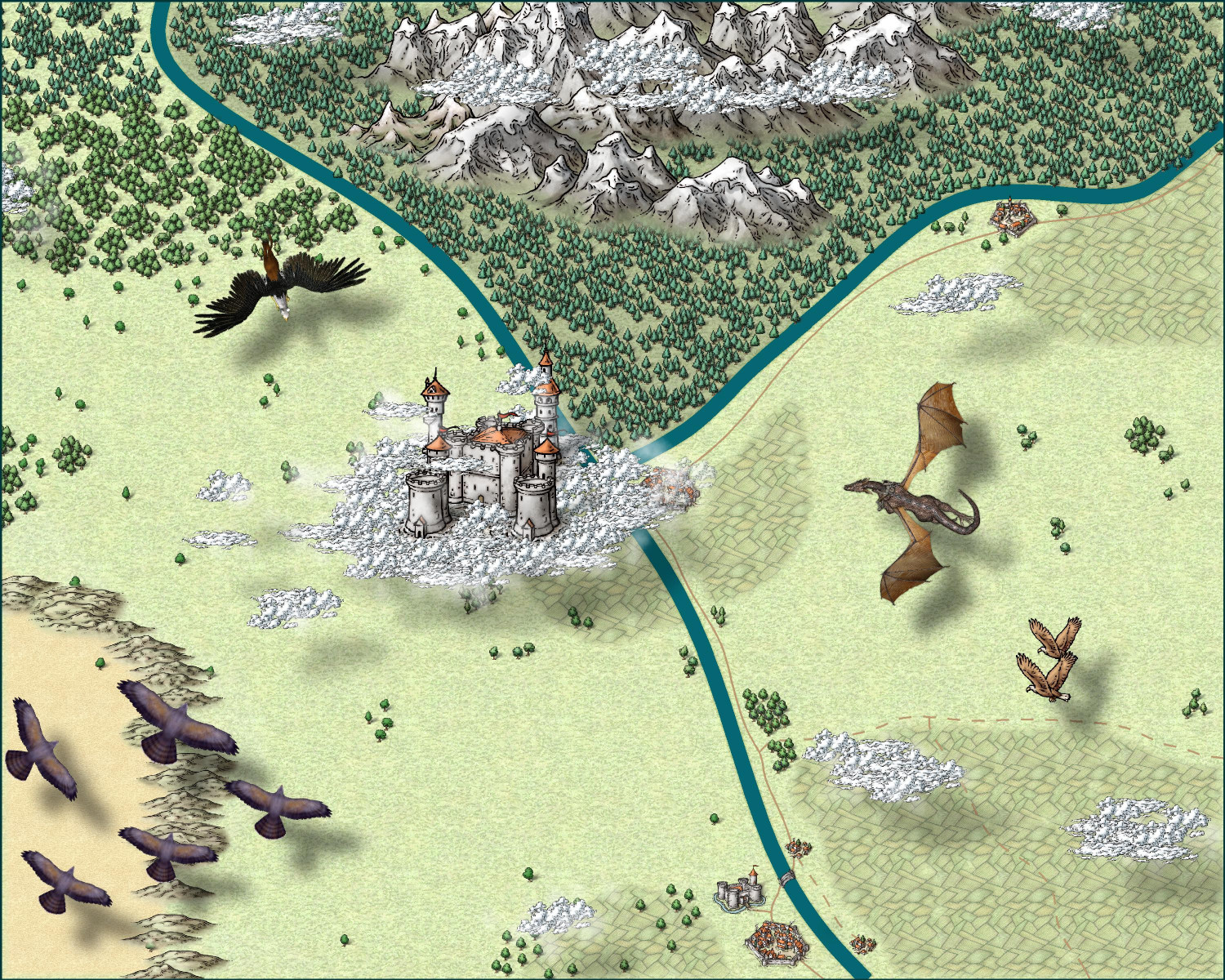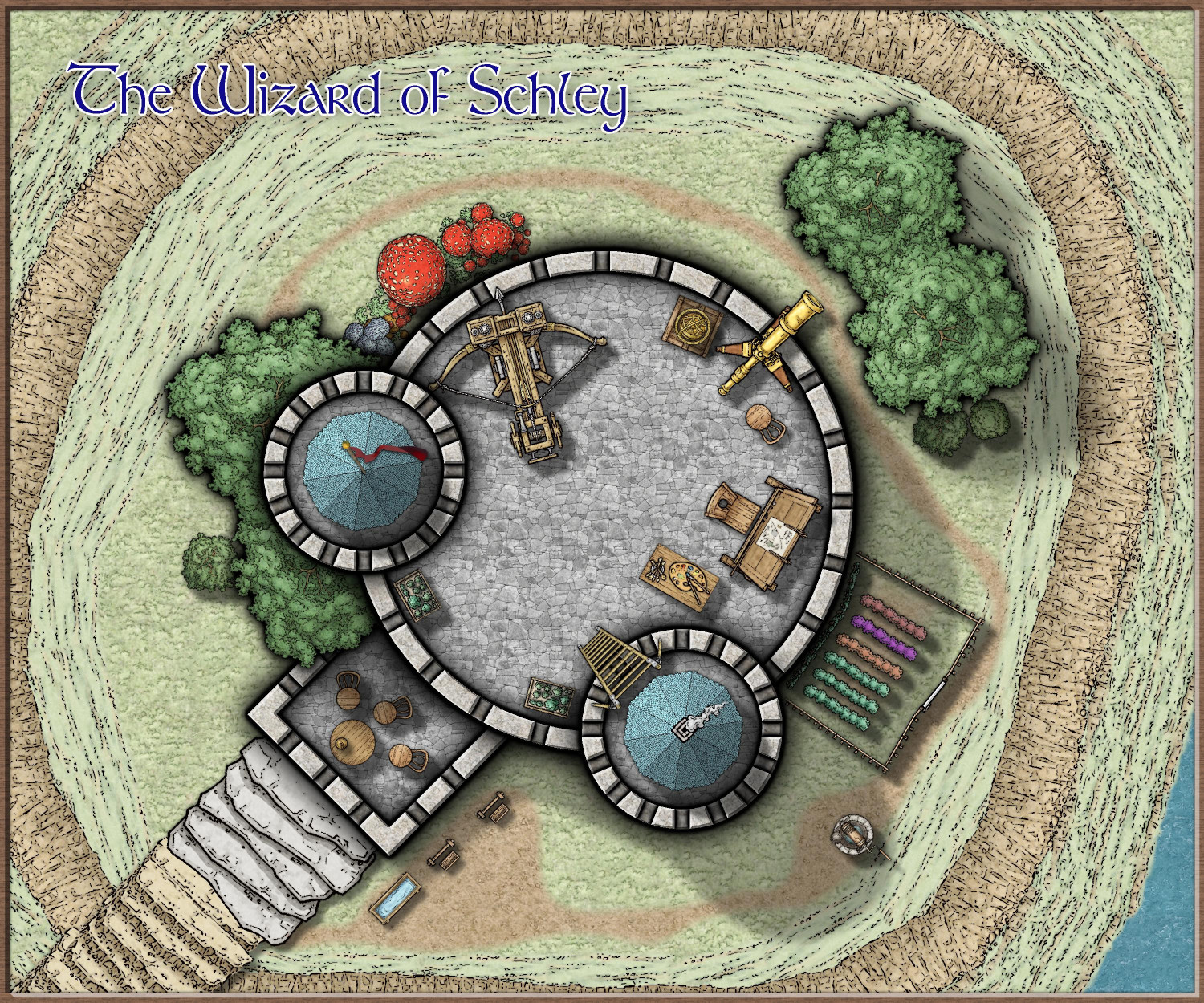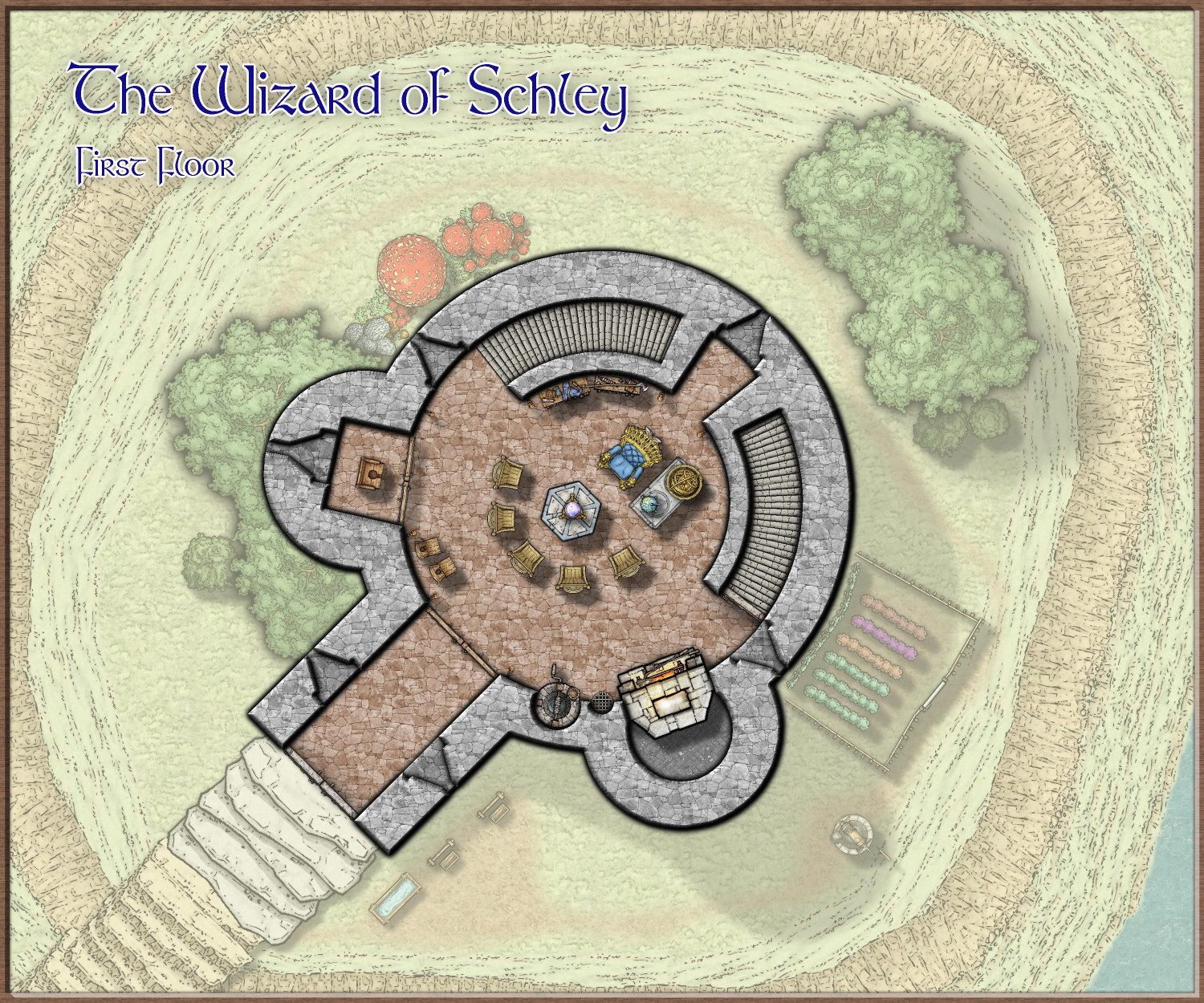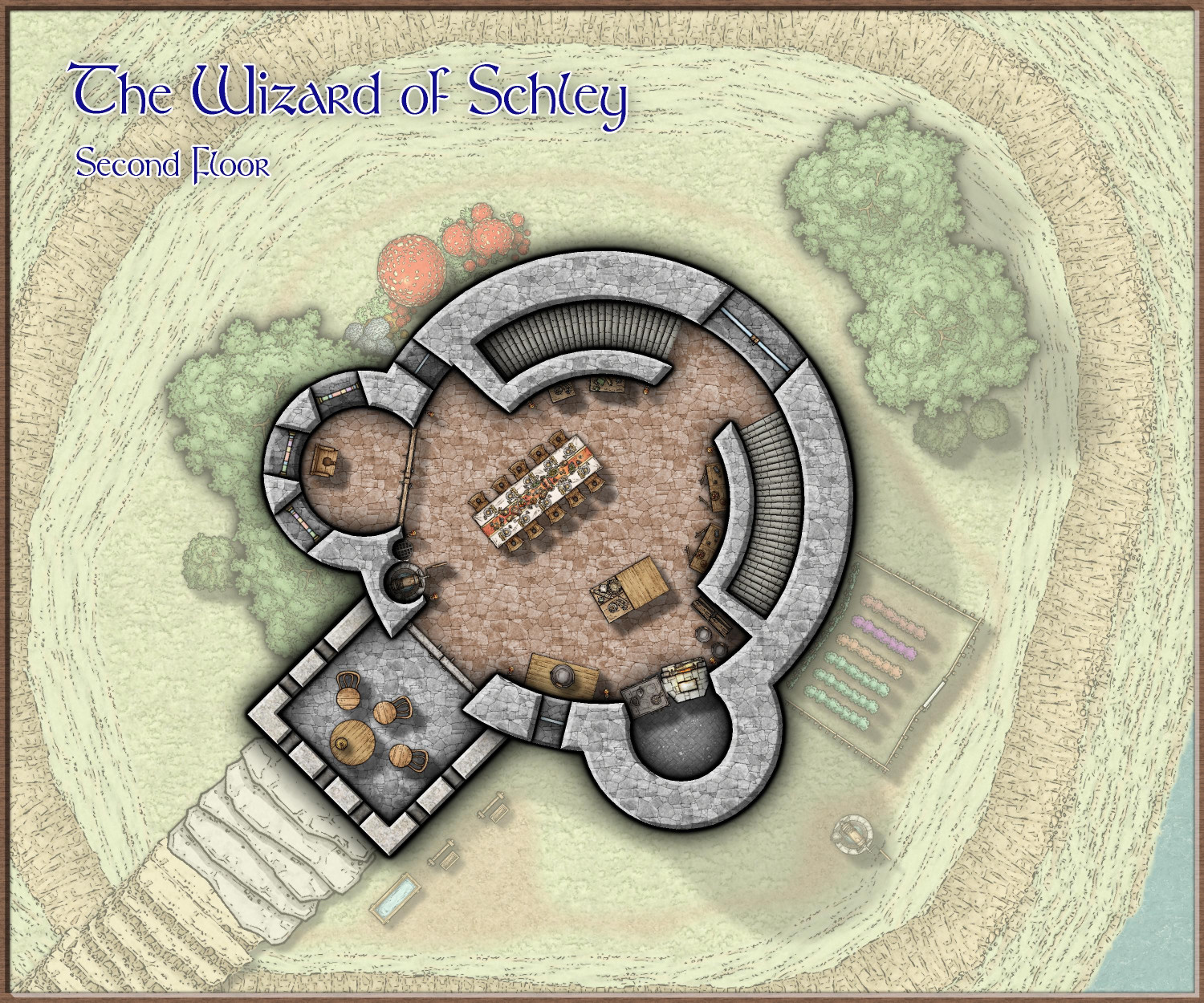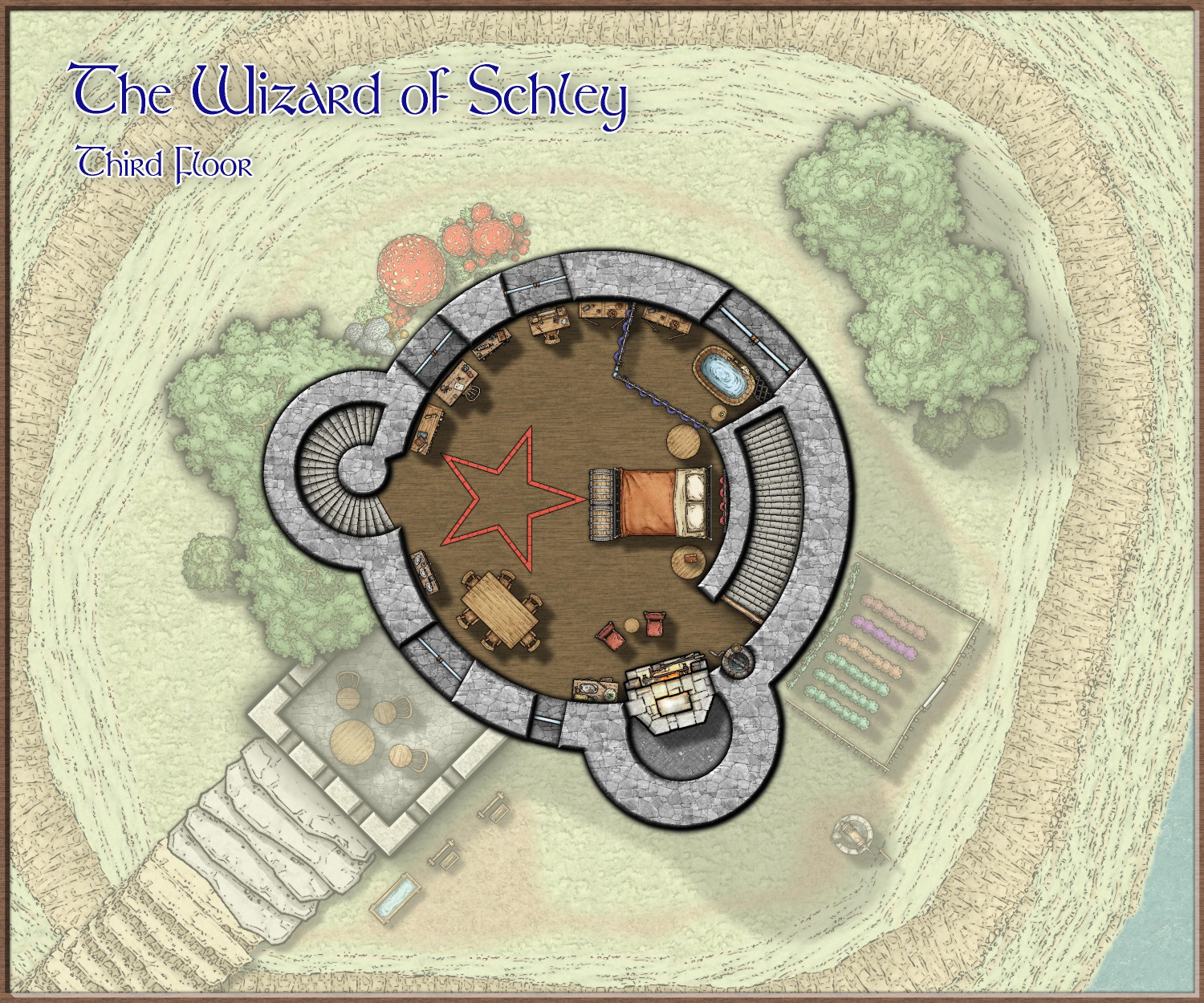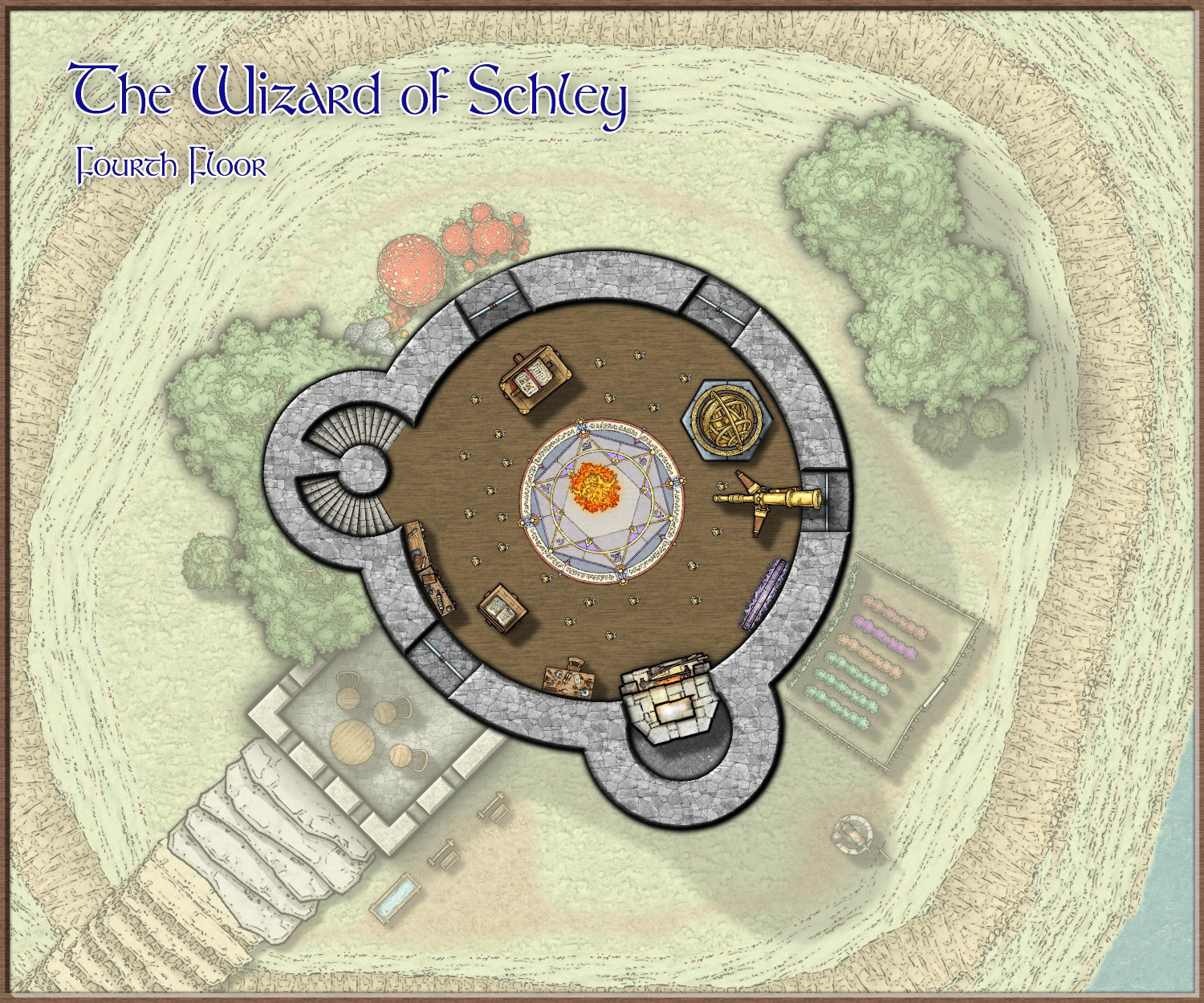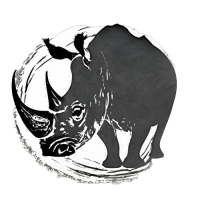Royal Scribe
Royal Scribe
About
- Username
- Royal Scribe
- Joined
- Visits
- 8,800
- Last Active
- Roles
- Member
- Points
- 3,195
- Birthday
- February 5, 1968
- Location
- San Francisco, California
- Real Name
- Kevin
- Rank
- Mapmaker
- Badges
- 16
Reactions
-
[WIP] Beneath the ruined temple
A few months ago, I posted a ruined temple that I designed in the Forest Trails annual. The folks who live in a nearby village often come during the day to picnic on the river banks to the south, southeast, and east of the ruins, but never on the ruins itself. There are rumors that the site is haunted (and plenty have claimed to have seen ghosts there at night). Plus, the place is overrun with snakes, some dangerously venomous.
I have finally designed the levels below the temple's ruins. This is mostly designed with Creepy Crypts, with heavy assist from DD3 and a few elements from Dungeons of Schley. I will post more images of this in my galleries.
The basement areas of this ruined temple have been taken over by an unsavory religious cult known for developing poisons as part of their worship of a serpentine god, and using them in their kidnappings and assassinations for hire. (The "ghosts" the townsfolk swear they've seen is actually smoke coming up through the ruined steps.)
The cultists mostly live in the first level of the temple's subterranean levels. They don't actually use the mossy steps (they enter and exit through lower levels). The original priests' chapel has been replaced by an alter to their serpentine god, and several sections of this level are dedicated to raising the venomous creatures.
The stairs in the northwest corner room also descend to the second level of the basement, but that's where they end. Here there are prison cells used to hold the cultists' kidnapped victims. One room is dedicated to raising the rats used to feed the pet snakes. A room that was once used to prepare the deceased for entombment has now been converted into a laboratory for the production of poison. There are also catacombs with crypts of the original temple's religious leaders. It's unclear whether the new cult also buries anyone in the crypts [maybe I will put a pile of bones in one of the sarcophagi that have been picked clean by the gelatinous cube in level three], but they do use one of the tombs for its secret use: the secret stairs in the southeastern-most tomb that descend to the third level. (Oh, the sewer pipes from Sinister Sewers are used to bring in fresh water from the river.)
The third and final level is mostly the real entrance/exit used by the cultists (though one "waste management" area brings in a gelatinous cube to keep things hygienic). Here, the stairs from the crypts above lead to a room with a tunnel to the north where the true entrance is located far away from prying eyes. But a secret door also leads to a winding stair: 506 stairs that descend another 380 feet to a secret room where a teleportation portal is located.
-
[WIP] Wizard's Tower - Interior
Turret is done, and with it the entire above-ground portion of the tower. There are several basement areas (cold storage and wine cellar, sewers, dungeon!) that still need to be mapped. My hope is to finish it all off before the end of the month.
Eighth Floor
The 8th Floor of the tower is the first floor of the turret, plus the roof area (protected by crenellations) of the main tower. The turret has arrow slits that can be closed off inside with metal shutters. (In looking at the arrow slits, I see they are not quite like the ones on lower floors, so I may adjust them.) The spiral staircase extends up one more level.
Ninth Floor
This floor provides arrow slits elevated above the roof of the main tower. The spiral staircase ends here, but rungs mounted on the wall allow for ascending to the "bell tower" above.
Tenth Floor
It's more of a light house than a bell tower. Luminescent crystals radiate light that can easily be seen for miles around. On holidays and special occasions, the wizard can use simple illusions to change the color of the light to match the holiday's traditional décor.
You may have noticed that these images now use the title "Tyr Alomere" instead of "Wizard's Tower." I have decided where I'd like to home it in the Atlas, a wizard's tower that I had placed in the Gold Coast area of Doriant that I mapped for the Atlas (circled in yellow in the two images below).
I will need to design the small village the tower is in first. Do you think I need to do a more regional map, or will the village with the tower suffice?
Here it is on the Gold Coast:
It also makes an appearance on the edges of the regional map of Gongodûr -- it's in the Kingdom of Vacuria, but on the edges of Gongodûr:
-
[WIP] Lumadair - Hand-Drawn Fantasy (CA221)
Can confirm that all four of the Forest tools now work properly. It was easier to delete the mysterious lines than to redraw the forests, but at least future maps won't have that issue.
When I brought the land over from the Fractal Terrains export, they were all locked together as a multipoly. I decided to explode them so that I could use the "Change Like Draw Tool" function with the green land for Lumadair and the default brown for the other continents.
Also, the multipoly sea contours from Fractal Terrains have the darker sea as the base with lighter contours on top. When I copied over the sea contours, I just copied a light one and then used the "Change Like Draw Tool" to change it to the lighter contour of the Hand-Drawn Fantasy style, and then manually drew in the darker contours. Not bad for a map that took me less than an hour for the initial map.
-
[WIP] Marine Dungeons Lighthouse (more May Annual Stairs & Steps)
Added a few final touches (a friend was confused about the seaweed washed up on the beach, so I added a little more floating in the sea, and a few other minor tweaks here and there. Not really sure what that line cutting off the light in the nighttime version is from.
Here's the "final" (is anything ever really final?) version of the daytime and nighttime full maps. More details maps in my galleries.
-
[WIP] The Griffon's Eyrie Redux: Spectrum Overland
Made some adjustments, including (if this doesn't step on any toes) changing it to be a wyvern's eyrie. Fixed some trees on the wrong sheet, and decided to change the sea at the base on the cliffs so that's it's only off to one side, with jungle on the other side.
Adjusted the nighttime one, too. Previously, I mimicked night by adding the SOLID 30 fill over everything. This time I used lighting effects instead with a 65% ambient light. That allowed me to add a little extra light over the eggs. It's subtle, maybe too subtle to notice (though it's a bit more apparent when compared to a version that has that turned off). I had a moon but I didn't care for it, so I removed it. Does anyone know if there are crescent moon symbols? My campaign world has three moons, but I wouldn't want them to always all be full.
Here it is with the galactic night sky.
And just so you can see it with and without the extra light over the eggs, here's a side by side comparison with the light symbol sheet hidden and unhidden.
-
[WIP] Town of Kukaar (Ancient Cities Annual)
Hi everyone,
Thank you for the feedback, it was very helpful. I put the legend back to the original size and location, and it actually looks pretty good. There's room for some lines to wrap if I make it slightly larger, but it seems legible enough as is. Also, I made the roads stand out a little more by changing the transparency effect from 50% opaque to 75% opaque.
Also, are the numbers on the map okay? Should I make them bigger? (I just noticed that some seem to be different sizes, so I will at least have to standardize that.) Are there effects that would make them pop more, like a stronger white glow? Is there anything else unlabeled that should be labeled? I just provided a few sample businesses (inns, blacksmiths, etc.) figuring that a DM could make up something on the fly if players were looking for a specific type of business, but I can add others that folks think are necessary.
Neighborhood maps are a good idea if anyone wants to do a full campaign here (rather than an adventure limited to an inn or a temple, where the rest of the map just provides a general context). I have a whole laundry list of maps I want to do first, but once this is published in the Atlas (after the contest is done), I would welcome anyone to take a neighborhood and expand on it.
-
Castle in a Cloud
Thank you, everyone, for your help.
After a bit of wrestling (and an evening of downloading massive files), I was able to install the Dundjinni symbols that Wyvern recommended. I added a griffon and a dragon with a rider. I also swapped out the giant hawks in the lower right side for a pair of eagles from the Mike Schley Overland that I missed. My flying creatures are a bit oversized compared to the castle, but I figure it's a bit of forced perspective, with the flying creatures coming in from above and closer to the viewer.
(I also trimmed back some of the farmland on the right side so that it's now mostly around the towns and cities.)
I belatedly discovered that Mike Schley's clouds also have a vericolor version, so I could add in some light gray ones to add a little texture, but I haven't done that. I will get the 2014 Annual with the Alyssa Faden clouds in a few weeks and try them on a whole new map from scratch.
Ricko, I am enjoying your tutorials. Thank you.
-
Community Atlas 1000th map Competition - with Prizes [August/September]
I am ready to submit the summer version of the village of Arbor Hollow for the Atlas contest. The spring, autumn, and winter versions (as described in this thread) will be submitted separately, not as part of the contest but hopefully by Monday so that if it's more convenient for Remy to process them all together, he has that option.
Here are the files:
This is where Arbor Hollow appears in the parent map, the Kingdom of Gongadûr, which was previously submitted in this thread. It is located in the yellow-boxed area in this map:
Pretty sure this is my last submission for the contest, but I have tons more stuff in varying stages of progress to submit for the Atlas later.
-
Castle in a Cloud
Thrilled to be included in the January 2024 Maps of the Month post, but I just noticed that although I posted the corrected map in the Facebook group, the final map here still has some upside down trees! Posting the corrected one now since the blog post links here.
-
[WIP] The Wizard of Schley
Added the path to the well and the hitching posts (not stocks), and made some other adjustments. Working on the basement (but I have a recent urge to design a small research vessel in Cosmographer, which I've never really played with so I might get hijacked).
It's fun having a chance to use Mike Schley's latest symbols.


